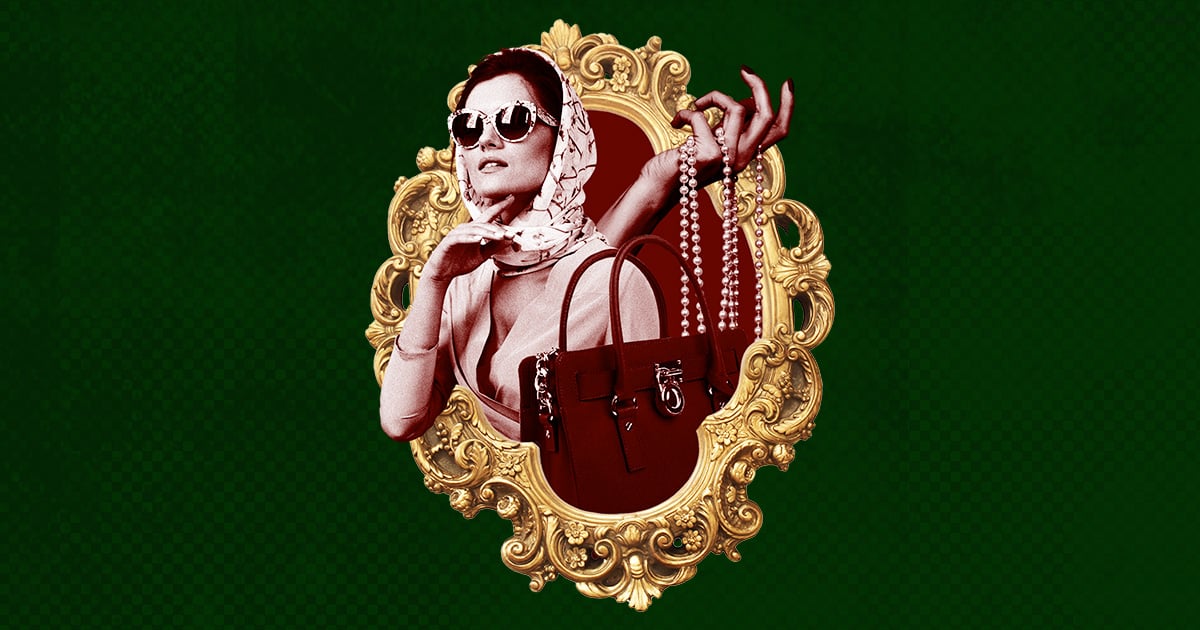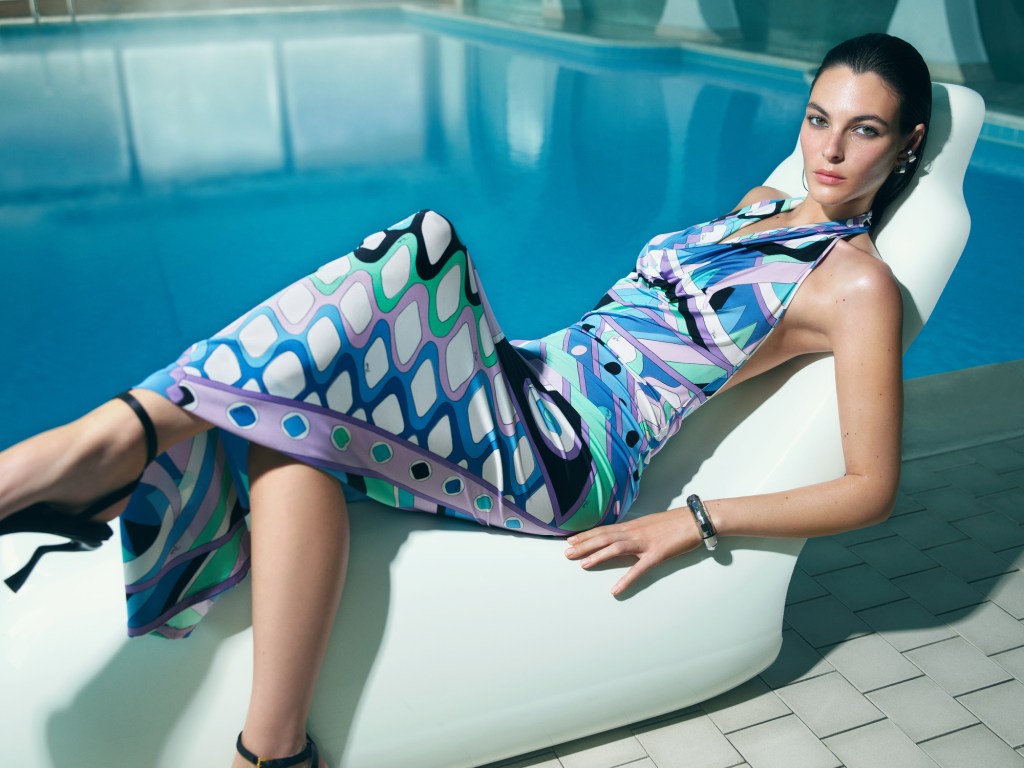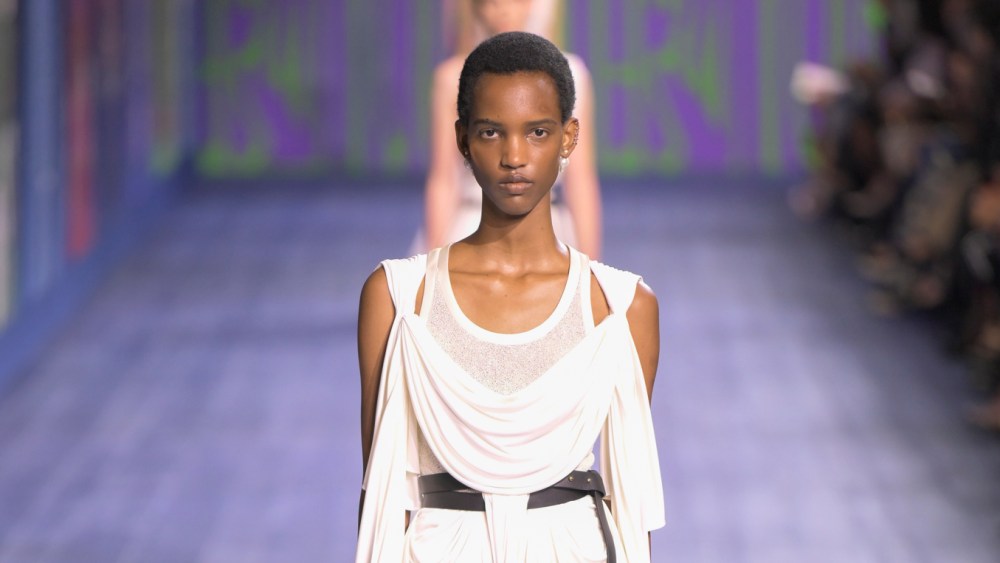If you’re a woman on the Internet whose social media algorithms have determined that you like fashion, then you’ve probably seen countless TikToks and Instagram Reels of content creators hopping on the “old money” aesthetic. It seems like an evolution of the “quiet luxury” trend of last spring, and consists of perfectly coiffed women with understated make-up showing off neutral, preppy outfits: wide leg, high-waisted pants with fitted dress shirts, backless black satin gowns, linen short sets with designer purses.
At first, the trend drew me in because it coincided with my goal of swapping my crop tops, jeans, and trendy pieces for a more mature capsule wardrobe. It also drew me in because it felt familiar. We’ve all seen these outfits on glamorous women in TV shows and movies, new and old: “Palm Royale,” “Gossip Girl,” “Clueless,” and “Gilmore Girls” come to mind, making this type of fit synonymous with wealth and a certain kind of female power that has long pervaded our collective consciousness.
This trend is also reinforcing racist and classist stereotypes about who is able to be elegant and classy.
It all felt like innocent escapism at first, but as my TikTok and Instagram algorithms pushed more of this content in front of me, I started to notice the uniformity of the creators, their videos, and the message they seemed to be sending and reinforcing. The vast majority of the creators I saw were thin and white, with the type of hair that could easily be blown out into a voluminous “old money” hairstyle. The outfits became boring and predictable, repeating the same tired combinations of high-waisted trousers, pleated shorts, poplin and linen shirts, tweed skirt suits, and navy blazers. To complete their projection of intergenerational, inherited wealth, the outfits were almost always finished off with a pair of designer sunnies and some ostensibly expensive handbag, like the classic Chanel flap bag or the Hermès Birkin.
Every video brought to mind country clubs and yachts – as well as income inequality and the systematic exclusion of non-white people from wealth-building. Some of the videos are particularly brazen and obvious in their pairing of elegance with whiteness and vulgarity with non-whiteness. These videos compare images of “elegant” makeup, hair, and clothing (muted, natural make-up; neutral clothing; thin lips; blowouts; short nails) to “vulgar” makeup and clothing (designer logos; full lips; braided hairstyles; long lash extensions; nail extensions).
I felt like I was watching the same video on a loop, which is partly explained by the nature of trends – once something becomes viral, it is everywhere, and people who are interested in being fashionable are likely to recreate it. However, not all trends are harmless, and it’s important to situate them in their proper societal context. The “old money” trend is not only promoting and venerating a very particular type of white, thin beauty, but it is also romanticizing the economic exclusion and economic exploitation that is necessary for old money to exist. As Nikole Hannah-Jones writes in “The 1619 Project,” European colonial empires, slave-owning white Americans, and everyone from “Midwestern farmers to bankers to sailors to textile workers . . . built their wealth from that free Black labor and the products that labor produced.”
In America, the ability to build wealth and pass it down to future generations is inextricable from the reality that Black people were, for generations, relegated to low-wage jobs, excluded from being able to buy land, and unable to get bank loans. When Black people did manage to build successful, thriving businesses and communities against all odds, they were subjected to racial terror such as the Tulsa Race Massacre. The consequences reverberate today: white American families are twice as likely to receive an inheritance and typically inherit three times the amount that Black families inherit.
Through the homogeneity of its creators and outfits, this trend is also reinforcing racist and classist stereotypes about who is able to be elegant and classy, and who belongs in certain spaces. These videos feel like they are in direct opposition to every think piece and article about how progressive and diverse Gen Z is. Moreover, this trend is happening at a time when the number of lower-income households is increasing, the middle class is shrinking, and the inflated cost of everything from gas to groceries to flights is putting a financial strain on folks. There is something uniquely dystopian about young people jumping on a trend that projects the privilege of intergenerational wealth when income inequality persists, and home ownership remains unattainable for large numbers of young Americans. While this economic reality impacts everyone to some extent, inflation and rising rental and home prices hit lower-income households the hardest, and Black Americans and Hispanic Americans are more than twice as likely to have low incomes as White Americans and Asian Americans because of systemic barriers.
At a time when the world feels like it’s on fire, people understandably might want an outlet by which they can pretend their lives are more luxurious than they are – and likely for most of these creators, it doesn’t go any deeper than participating in an easy trend and hoping for virality. But we all play a role in refusing to perpetuate stereotypes and learning about historical context and the economic reality for marginalized folks in this country. In the end, that’s the only way things will change.
Victoria Malone is a lawyer at Bumble and a freelancer who writes about gender, race, identity, and belonging. In addition to PS, she has written for Teen Vogue, Austin Woman Magazine, Zora, and other publications.




